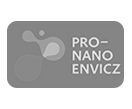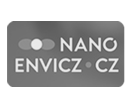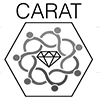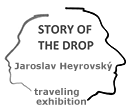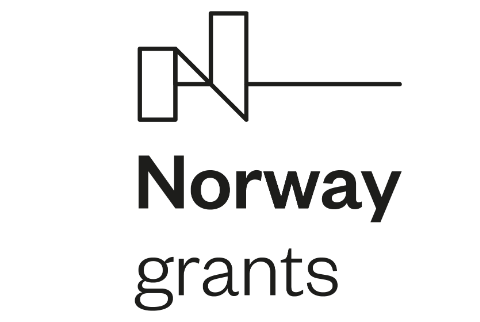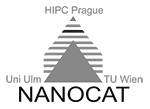Molecular catalysis at liquid-liquid interfaces: Towards chemical fuel cells.
Grant Agency
Ministry of Education, Youth and Sports of the Czech Republic
Topics
Molecular Electrocatalysis.
Year from
2007
Year to
2010
Aim: study by transient electrochemical and optical methods the catalysis of oxygen reduction at interface between two immiscible electrolyte solutions.
The main objective of the Action is to increase the fundamental knowledge and understanding of the chemistry occurring at surfaces and interfaces and the factors that tune it. An interdisciplinary, combined effort is the approach. A fundamental approach is advocated, even for industrially oriented research projects. This requires precisely defined problems at all levels and an interdisciplinary approach i.e. synthesis and activation of the materials; measurement of the surface properties; understanding surface properties at the atomic, molecular or cluster level and theoretical understanding of these properties in relation to chemical composition and the structure of the surface. As a consequence, the secondary objective is to gain advanced knowledge for modeling/predicting of the structure/composition reactivity/surface properties relationships of the materials, by means of characterisation of the bulk and surface properties under real operation conditions and for preparing materials with tuneable properties.
Domain: Chemistry and Molecular Sciences and Technologies
D36 Action Title: Molecular structure-performance relationships at the surface of functional materials
D36/0007/06 Working Group: The goal of this project is to study a novel electrocatalytic approach for oxygen reduction based on molecular catalysts straddling a soft interface such as a liquid-liquid interface. The long-term objective is the design of a novel class of “chemical fuel cells” where the reduction of oxygen is carried out chemically at a molecular interface. The strategy is based on the synthesis of amphiphilic bi-metallic complexes able to adsorb either as a monolayer or as nanoparticles assemblies. The complexes will comprise porphyrins and corolles sub-units. At a polarised liquid|liquid interface, the chemical reactions are controlled by the applied potential difference. Here, protons will be provided by the aqueous phase whereas the donors (e.g. ferrocene) will be present in the adjacent organic phase. The interfacial 4-electron oxygen reduction will therefore result as an electric current across the interface. In the second part of the project, we shall extend this approach to the photoproduction of hydrogen as a potential fuel. This COST programs combines groups with expertise in the synthesis of bi-metallic complexes and with expertise in experimental and theoretical electrochemistry, photoelectrochemistry at liquid-liquid interfaces , as well as computer simulation.
The main objective of the Action is to increase the fundamental knowledge and understanding of the chemistry occurring at surfaces and interfaces and the factors that tune it. An interdisciplinary, combined effort is the approach. A fundamental approach is advocated, even for industrially oriented research projects. This requires precisely defined problems at all levels and an interdisciplinary approach i.e. synthesis and activation of the materials; measurement of the surface properties; understanding surface properties at the atomic, molecular or cluster level and theoretical understanding of these properties in relation to chemical composition and the structure of the surface. As a consequence, the secondary objective is to gain advanced knowledge for modeling/predicting of the structure/composition reactivity/surface properties relationships of the materials, by means of characterisation of the bulk and surface properties under real operation conditions and for preparing materials with tuneable properties.
Domain: Chemistry and Molecular Sciences and Technologies
D36 Action Title: Molecular structure-performance relationships at the surface of functional materials
D36/0007/06 Working Group: The goal of this project is to study a novel electrocatalytic approach for oxygen reduction based on molecular catalysts straddling a soft interface such as a liquid-liquid interface. The long-term objective is the design of a novel class of “chemical fuel cells” where the reduction of oxygen is carried out chemically at a molecular interface. The strategy is based on the synthesis of amphiphilic bi-metallic complexes able to adsorb either as a monolayer or as nanoparticles assemblies. The complexes will comprise porphyrins and corolles sub-units. At a polarised liquid|liquid interface, the chemical reactions are controlled by the applied potential difference. Here, protons will be provided by the aqueous phase whereas the donors (e.g. ferrocene) will be present in the adjacent organic phase. The interfacial 4-electron oxygen reduction will therefore result as an electric current across the interface. In the second part of the project, we shall extend this approach to the photoproduction of hydrogen as a potential fuel. This COST programs combines groups with expertise in the synthesis of bi-metallic complexes and with expertise in experimental and theoretical electrochemistry, photoelectrochemistry at liquid-liquid interfaces , as well as computer simulation.
prof. RNDr. Samec Zdeněk DrSc.
E-mail
zdenek.samec jh-inst.cas.cz
jh-inst.cas.cz
 jh-inst.cas.cz
jh-inst.cas.czRoom
409
Department
Extension
+420 26605 2017
Publications











